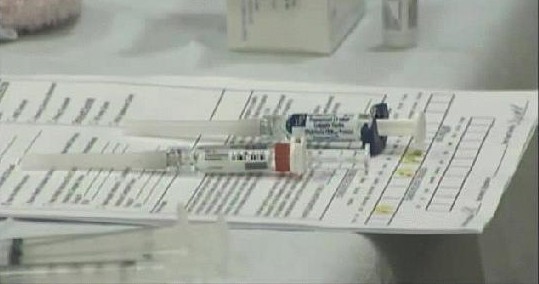
Health officials in Arizona are monitoring at least 1,000 people, including around 200 children, who could have been exposed to measles at the Phoenix Children’s East Valley Center after a woman who visited the medical facility was found to have the disease.
The woman is thought to have contracted the illness from members of a family from Pinal County who had visited the Disneyland theme park in California, the Associated Press reports.
“Unfortunately, she came down with the disease and by the time it was recognized had already exposed a large number of children at the facility,” Maricopa County health director Bob England told AP.
After California, Arizona has the highest measles incidence related to the recent outbreak at Disney parks, and the fear is that the outbreak could now increase dramatically. As of Wednesday, health officials had linked at least 95 cases of the virus to Disneyland.
Measles is among the most contagious of all viruses and can spread through a sneeze or cough before a person even develops symptoms. The virus can remain airborne and live on surfaces for an extended period of time, making transmission easier to take place but harder to trace. In fact, measles is so contagious that that 9 out of 10 people who have close contact with a measles patient will become infected themselves, unless they are immune.
As a public-health precaution, officials are asking all unvaccinated individuals in the group being monitored to remain homebound for a 21-day observation period, or at the very least don face masks if they venture outside.
“To stay in your house for 21 days is hard,” said State Health Services director Will Humble. “But we need people to follow those recommendations, because all it takes is a quick trip to the Costco before you’re ill and, bam, you’ve just exposed a few hundred people. We’re at a real critical juncture with the outbreak.”
Authorities are currently trying to track everyone who visited the Phoenix Children’s East Valley Center from Jan. 20 to 21. The number of unvaccinated people who may have entered the center during that time remains unknown.
Measles, whose symptoms include rash and fever, was declared eliminated from the United States in 2000, meaning that it no longer spreads routinely like the common cold. While travelers from overseas sometimes import the virus, high rates of immunization have generally stopped it from spreading in the community.
But thanks to a growing anti-vaccination movement, measles and other vaccine-preventable diseases are on the rise again: in 2008, 2011, 2013 and 2014, there were more reported measles cases compared with previous years. Last year, 644 cases were confirmed, accounting for a nearly two-decade high.
People who choose not to vaccinate their children are taking a risk both for their own child and for the larger community. As more and more children are withheld from immunizations, the risk of contracting infectious diseases increases for everyone. That’s because vaccine-refusal reduces herd immunity — the community-wide protection conferred once a critical percentage of the population is vaccinated. For highly contagious diseases like measles, this percentage is around 96 percent of the population; if the number drops any lower, we lose the protective effects of herd immunity.
Herd immunity is particularly important for those who are immunocompromised, too young to be vaccinated, or otherwise medically ineligible for vaccination. In California, at least six cases of measles linked to the Disneyland outbreak occurred in infants too young for the MMR vaccine, and earlier this week health officials in the Bay Area ordered 30 babies to remain isolated in their homes after potential exposure to measles at a children’s clinic.
Last week, the American Academy of Pediatrics released a statement urging parents, schools and communities to vaccinate children against measles. The group said all children should get the vaccine for measles, mumps and rubella (MMR) between 12 and 15 months of age and again between 4 and 6 years old. According to the Centers for Disease Control and Prevention, two doses of the MMR vaccine are about 97 percent effective at preventing measles.
